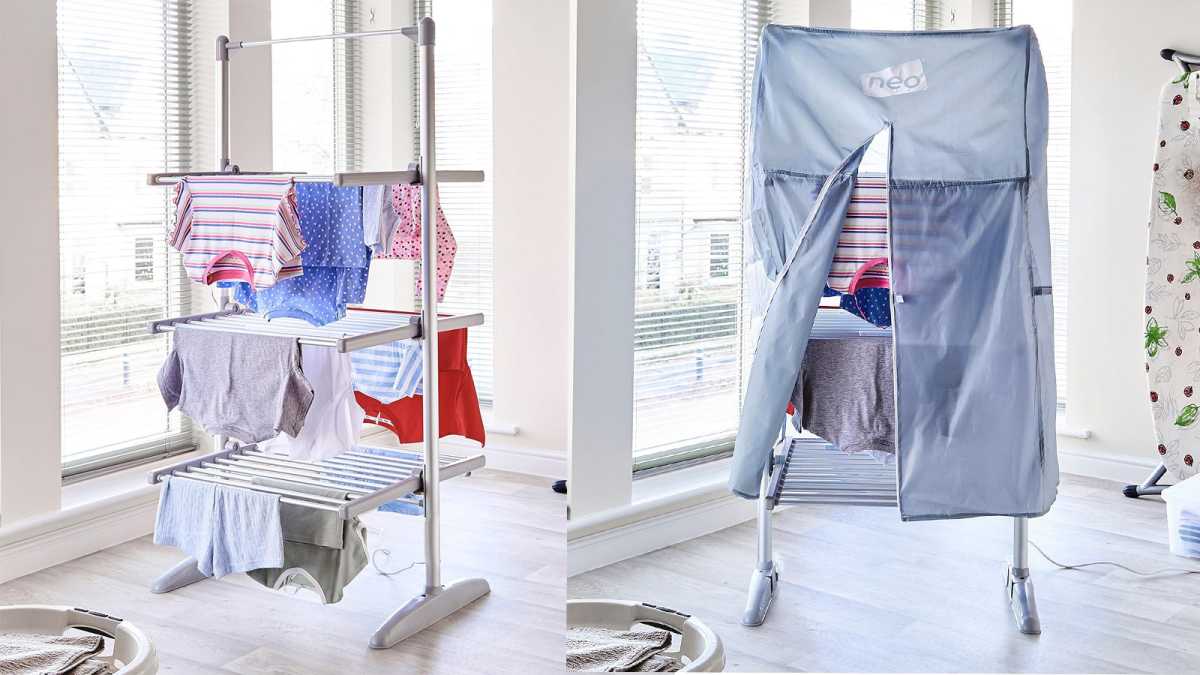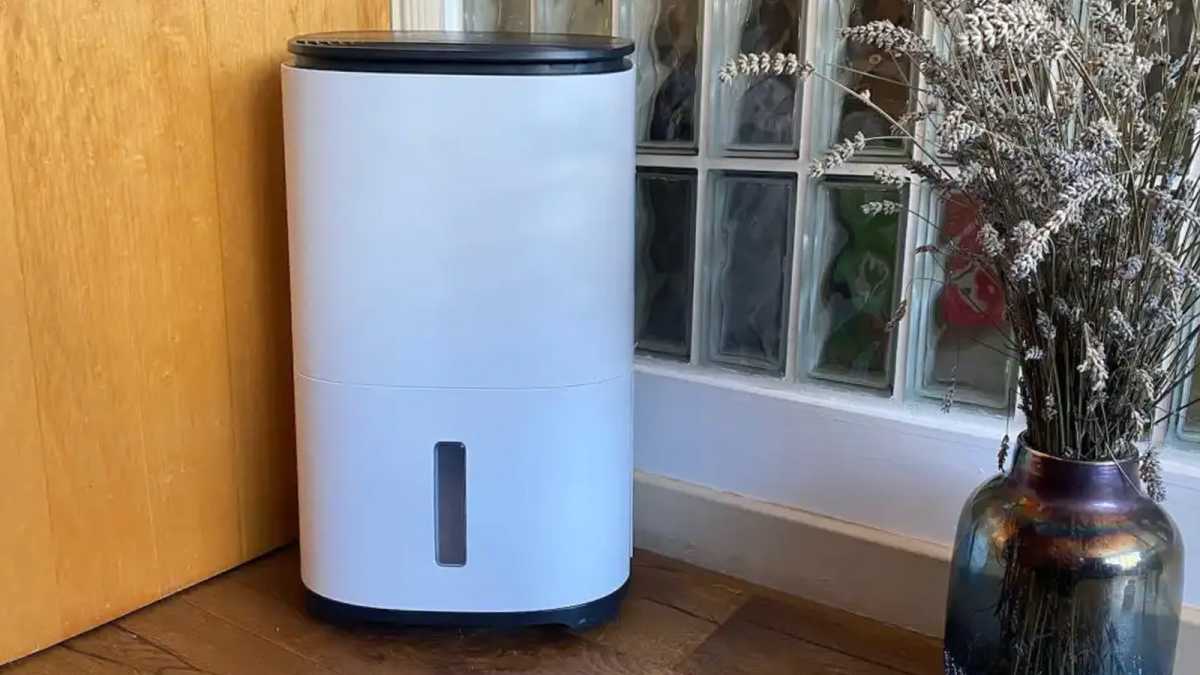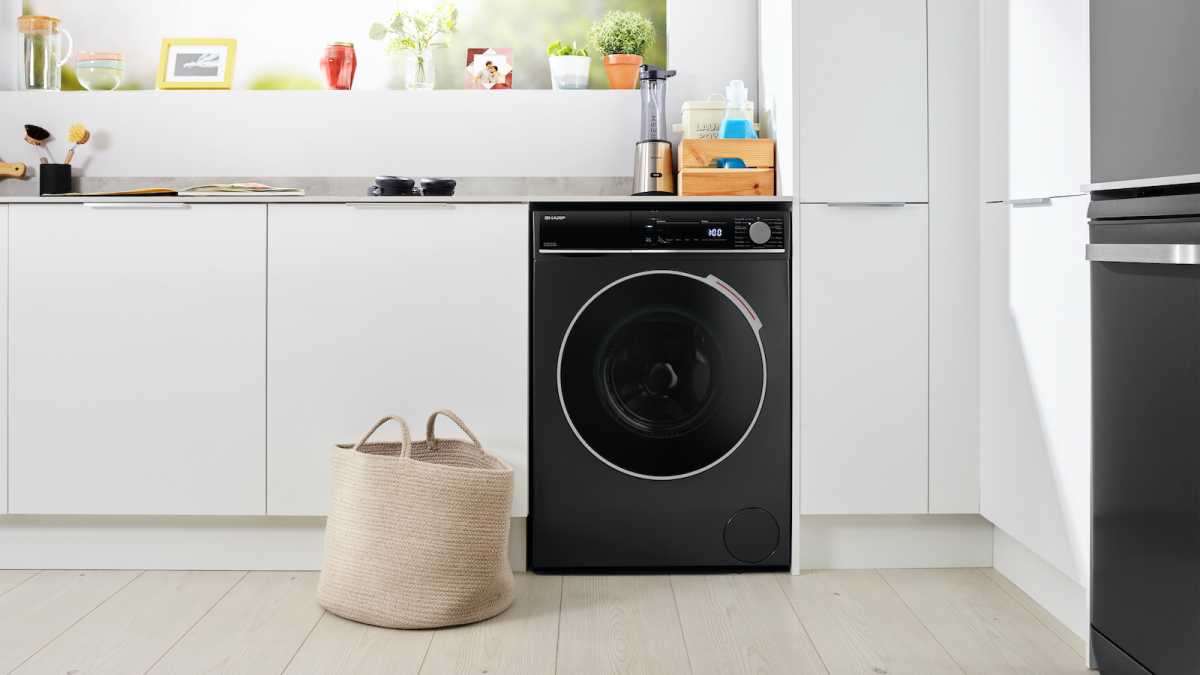Money-saving specialist Martin Lewis calls it a “demon appliance“. That’s because your tumble dryer is one of the most expensive home appliances to run.
Getting clothes dried at home without running up the power bill is a problem people will be facing every day until spring. But not drying your clothes properly can leave you with unhealthy, damp air in your home and smelly, mildewy garments.
We’ve got suggestions for cheaper alternatives to using a tumble dryer and have tips on using your tumble dryer efficiently.
What are cheaper alternatives to a tumble dryer?
1. A heated clothes airer
A popular option is to invest in a heated clothes dryer. This is essentially a heated rack, like a clothes horse. Just hang your clothes on it, plug it in and it’ll warm up. However, like everything else, it has its pluses and minuses.
Pros:
- They’re cheap to run. If you’re in the UK, one could cost you around 7p per hour.
- They’re easy to use: just set it up and hang up your clothes.
- Depending on the type you buy, they may come with a cover to speed up drying. You can even buy a cover separately, like this £29.99 one from Amazon UK, which will fit a three-tiered drying rack. (Note that you’re just buying the cover.)
Cons:
- You can’t just hang clothes and forget about them. You’ll need to keep turning them and moving them to ensure that they dry all over.
- You might end up with more ironing to do as creases from hanging are dried into garments.
- They can be cheaply made and flimsy. You probably won’t be buying one for life.
If you want to buy, this is a good option. Amazon is selling Neo’s large, aluminium, three-tiered heating rack with dryer cover for £109.99. At current UK electricity prices (October 2024 price cap), this will cost you 7p per hour to run.

Neo
And if you’re in the US, you can buy a drying rack with cover from Amazon for $77.28. It’s stainless steel and measures 19.6in (D) x 29.5in (W) x 59in (H).
2. A dehumidifier
Rather than heating your clothes, your other option is to pull the excess moisture from the air. A dehumidifier will stop damp and help your clothes dry more quickly.
Pros:
- They’re very cheap to run. In the UK, it could cost just 4p an hour.
- You can run it to combat any damp problems you may have anywhere in your home.
- A decent one will last you for years to come.
- A dehumidifier may also act as an air purifier.
Cons:
- They are more expensive to buy than a heated clothes airer.
If you’re in the UK, we’ve tested and would recommend the Meaco Arete One. We tested the pricier 25L model, but for home use, the 12L model will work well. It’s available from Appliances Direct for £159.98 and the 10L model from John Lewis for £159.99.

Emma Rowley / Foundry
The 12L model is a 165 watt appliance, which on the October 2024 price cap tariff would cost 4p per hour to run. It’s specifically designed for use in the UK, is simple to set up and use – even if you’ve never had one before – and has wheels on so you can easily move it to where you need it.
If you’re in the US, you can get the HomeLabs 1,500 sqft dehumidifier from Amazon for $139.99, and there are larger room options on the same page.
Get the most from your tumble dryer
However thrifty you’re trying to be this winter, you’ll probably need to use your tumble dryer sometimes. If you have children or a baby, you’ll definitely need it to stop laundry from piling up and things getting unmanageable.
First off, follow Martin Lewis’ advice and don’t use it between the hours of 4pm-7pm, when electricity is at its most expensive.
Second, when you need to use your tumble dryer, don’t under- or overload it to make sure it’s at its most efficient.
Finally, while tumble dryers are expensive to run, there are a lot of scare stories going around that exaggerate how much they cost. Plus, remember that while alternative options might be cheaper to run, you still have to factor in the cost of buying those gadgets, and not simply look at how much they cost to use per hour.
According to the Citizens’ Advice Bureau, which has a calculator on its website, with a current standard electricity tariff, one cycle of a condenser tumble dryer with a full load will cost £1.17.

Sharp
But your tumble dryer may cost more or less depending upon how much power it uses. If you want to find out what it costs to run, there are two options. The first is to check your manual. It’ll contain information about your dryer programme’s wattage and electricity use.
If you can’t find your manual, look up the make and model of your tumble dryer online. Once you have this information, and your electricity unit rate charge, you can use an online calculator, like the one from Sust-It, to work out the cost.
The second and more precise way is to check using a power meter. You can buy a power meter for around £20 in the UK/$12.50 in the US. We’ve got advice on how to use one.
Essentially, though, you plug in your power meter into a socket and plug your tumble dryer into that. Then you run the drying programme and you’ll see how much electricity it uses. Once you find out what a load costs to dry, you can budget for its use and won’t have to worry when you need to run it.
For more help saving on bills this winter, you can find out what your appliances cost to run and find out why longer cycles are key to saving money on your dishwasher and washing machine.


